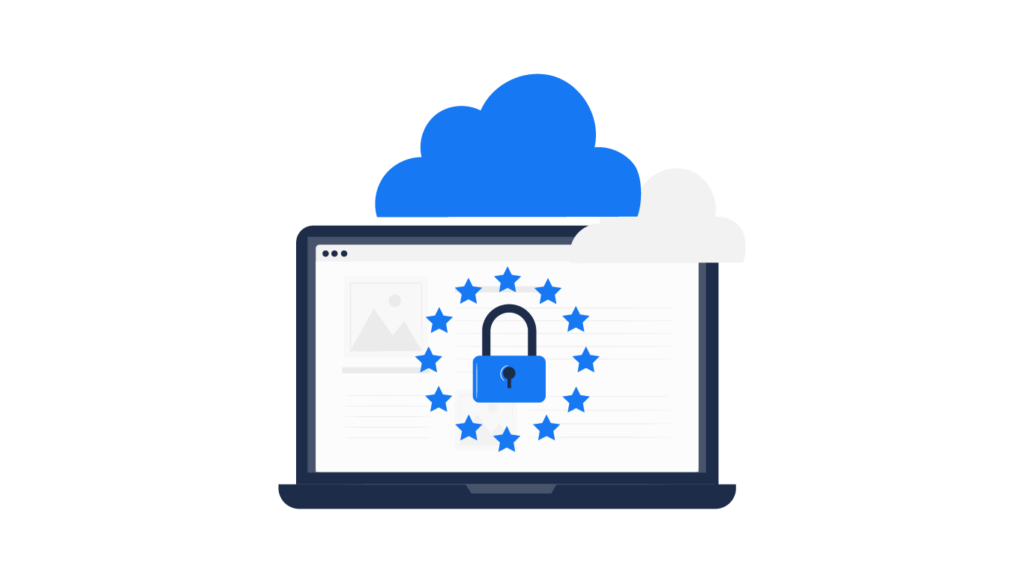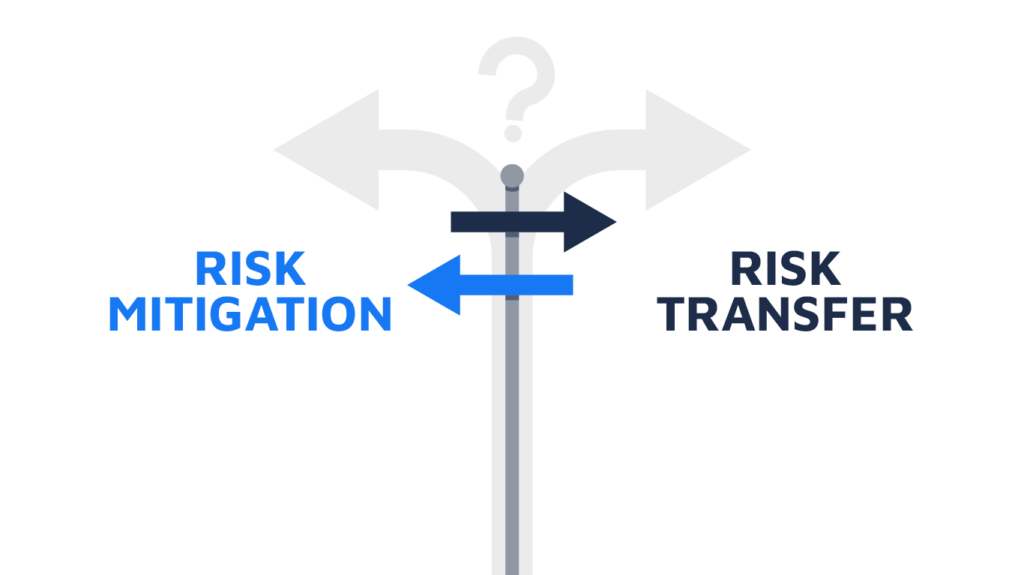Cybersecurity risk involves researching the threats to your business IT network, the probability of the threats to occur, and the level of impact they would have on the business if they were to come to fruition. IT departments must spend time researching and implementing risk management techniques in cybersecurity to prevent costly attacks.
The threat from cyber criminals is growing continuously, with ransomware being particularly prevalent. IBM found that the average ransom payment in 2022 was $812,360. However, the total cost of a ransomware attack includes many more elements, with IBM estimating it as totaling $4.5 million on average.
This article helps you understand cybersecurity risk management techniques and best practices to protect your business.

What are risk management techniques in cybersecurity?
Risk management techniques in the cybersecurity space include any methods used by companies to mitigate or eradicate threats to their networks. They can range from attitudes and habits to procedures to programs that you install to reduce the chances of the risks materializing.
Risk assessment is the process of identifying and evaluating the threats to your organization. Risk management takes the learnings from the assessment process and puts in place controls to prevent those threats from infiltrating the organization.
There are two main approaches to tackling cyber security risk management. They are:
- Component-driven risk management – a bottom-up approach, which revolves around the threats to and vulnerabilities of your technical components.
- System-driven risk management – a top-down approach, which analyzes your system as a whole to understand how to avoid attacks.
The idea is to approach cyber threats strategically and tackle the most pressing concerns as a priority.
Top risk management techniques in cybersecurity
1. Understand the threat landscape
You should understand the threat landscape and how it affects your organization in particular. Think about your areas of exposure, and research the trends in cybersecurity to understand which threats are in existence and are emerging.
Follow thought leaders in the industry on social media, particularly LinkedIn. Read the industry press and keep an eye out for announcements from authoritative bodies such as the FBI to find out the latest updates on what is happening in relation to cybercrime.
2. Conduct a cybersecurity risk assessment
The first step of the risk management process is risk assessment. Not all trending threats are of equal importance or relevance to your business, and every company’s risk assessment will reveal varying levels of exposure to the different threats.
You must work out which threats are most likely to affect your organization and which will cause the greatest damage if they do so. From this assessment, you can prioritize mitigating the most likely and most impactful threats, working through them until you reach the least likely with the least potentially damaging effect.
3. Build an incident response plan
Having a clear incident response plan ensures that you cover all bases in order to mitigate the effect of a cyberattack and restore your systems as soon as possible. Without a clear guide to your response, your IT team could easily miss vital steps to contain and eradicate the threat in the panic of an emergency situation.
When everyone understands their roles and responsibilities and the correct order in which to carry out the tasks within the incident response plan, you can defend your organization in the most efficient way possible, reduce downtime, and secure the network to get the business back to work in good time.
4. Improve threat detection
The quicker you can detect threats, the less damage they can cause, and the easier it is to restore your network. There are a number of threat detection methods, including:
| Detection method | Explanation |
| Intrusion Detection Systems (IDS) | This is an app or a device that monitors your systems to alert you to attacks or violations of your IT policies, such as the use of shadow IT by employees. |
| Security Information and Event Management (SIEM) | A SIEM works in the background of your network to flag anomalies in the behavior of users. It then alerts the IT team to potential threat events, which it monitors and manages. |
| Penetration Testing | Companies carry out penetration testing by recreating the types of attacks that criminals might attempt in order to see how robust the current security protocols are. |
5. Enforce strict security protocols
Companies have multiple options available in terms of security protocols. They include:
| Protocol | Explanation |
| Establish network access controls | By restricting access to areas of the network for users on the basis of necessity, you reduce the chances of bad actors being able to steal all company data in an attack. |
| Implement firewalls and antivirus software | Firewalls and antivirus software provide a barrier between your users and the threats in the online environment. They are not impenetrable but can filter out some attacks and slow others down. |
| Create BYOD policy | Mobile devices are ubiquitous in society now, and it is understandable that employees find it intuitive to use their personal cell phones and tablets for work. However, this can cause a security threat, so you should police their use on your network. |
| Create multi-factor access authentication (MFA) | MFA is another layer of protection for your network. Even if hackers manage to find out a user’s login credentials, they could still be prevented from accessing their accounts due to this layer of protection. |
| Use strong passwords | Reports say 30% of users have suffered attacks due to weak passwords. By necessitating strong passwords, you can help to protect your network. |
6. Create a software update and patching schedule
As cyber criminals identify vulnerabilities in software, providers update and patch it to close those holes. However, if your users do not access the updates they need, it leaves their profile and your network open to attack.
You should schedule updates and patches on a regular basis for those devices on the network. When users log in from their own devices, this might not be possible to achieve centrally. In this case, you should make it a requirement that they keep their devices and software up-to-date or risk sanctions.
7. Continuously monitor network traffic
By continuously monitoring network traffic, you can gain a lead on suspicious or abnormal behavior on your systems. Rather than waiting for the results of an attack before you can act, monitoring allows you to be proactive and head off attacks before they cause too much damage.
By setting the monitoring to identify the common activities involved in a cyberattack, you can be alerted in good time and protect your assets.

8. Apply metrics to measure effectiveness
You should monitor your cybersecurity efforts by creating KPIs to measure progress. There are a number of metrics that will help you assess how effective your risk management is.
These include the number of security incidents, the unidentified devices on your network, the mean time to detect threats, and more.
9. Create a cybersecurity training program
Only by dedicating time and effort to training employees on the reasons behind your cybersecurity risk management policies can you make them truly effective. Employees need to understand the dangers and potential impacts of failing to protect their devices and the methods to do so.
The risks might seem obvious to the IT function, but to other employees, the threats are not as tangible until you undertake appropriate training with them.
Risk management best practices
- Establish a cybersecurity risk management framework that dictates how you identify, mitigate and communicate about the cyber threats in your organization.
- Integrate with business operations by involving senior leaders in decision-making and explaining how IT safety is helping them increase the bottom line.
- Run regular risk assessments and audits to keep up to date with the shifting cybersecurity landscape.
- Measure effectiveness against predetermined cybersecurity risk management KPIs to help finesse your approach in the future.
- Ensure continuous monitoring and improvement to instill a cybersecurity culture in the organization.
FAQ
What is cyber risk remediation?
Cyber risk remediation refers to the process of identifying and addressing vulnerabilities in an organization’s IT infrastructure to reduce the risk of cyber attacks. It involves implementing security measures to prevent and mitigate potential security threats.
What is a cybersecurity risk management tool?
A cybersecurity risk management tool is a software solution designed to help organizations manage their cybersecurity risks. These tools provide a comprehensive view of an organization’s IT infrastructure, help identify potential vulnerabilities, and assist in developing strategies to mitigate risks.

What is the difference between risk mitigation and risk transfer?
Risk mitigation involves implementing strategies to reduce the likelihood or impact of potential risks, while risk transfer involves transferring the financial consequences of a risk to another party, such as an insurance company.
What are the benefits of conducting regular risk assessments?
Conducting regular risk assessments can help organizations identify and prioritize potential cybersecurity risks, develop and implement effective risk management strategies, and ensure compliance with industry regulations and standards. Regular risk assessments also help organizations stay up-to-date with emerging cybersecurity threats and trends.
How can employee training reduce the risk of cyber-attacks?
Employee training can help employees recognize the warning signs of phishing attacks, malware infections, and other forms of cyber threats. It can also teach them best practices for password management, safe internet browsing, and the proper use of mobile devices. By ensuring that employees understand their role in maintaining the security of the organization’s systems and data, organizations can create a culture of cybersecurity awareness and reduce the likelihood of a successful attack.
Conclusion
These risk management techniques in cybersecurity help you to take those threats that you identify and work out how best to avoid them. You can put in place a number of techniques and protocols to give you the best possible protection from cyber criminals and their attacks, therefore reducing downtime and cost to the organization. Your cyber risk assessment will help you identify which threats to mitigate.
Vaultry is a solution that monitors all the devices on your network to alert you to shadow IT, cracked software, and other vulnerabilities to your cybersecurity. Get started with Vaultry now to receive alerts to problem applications and for the ability to remove them before they facilitate an attack.

